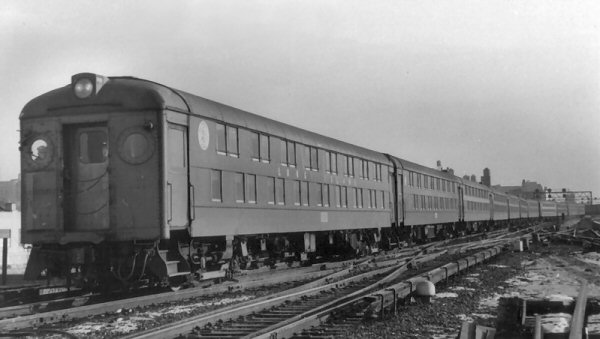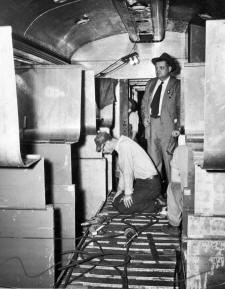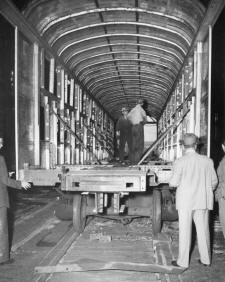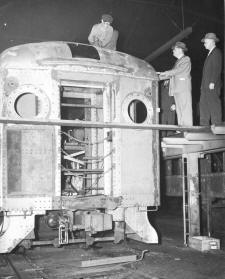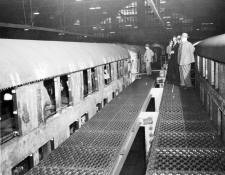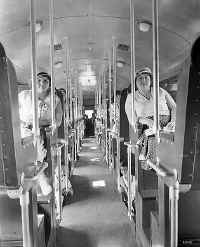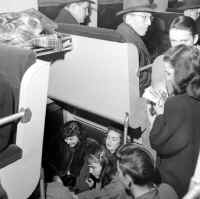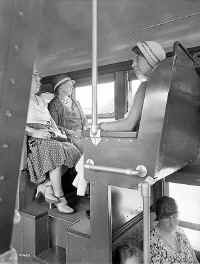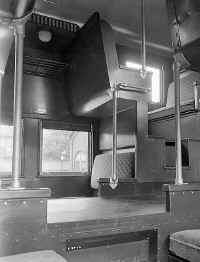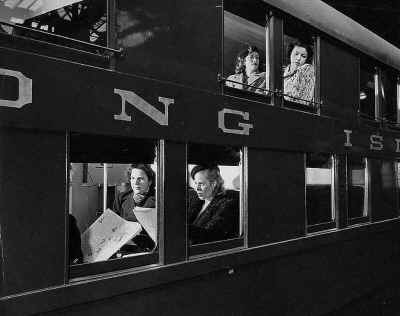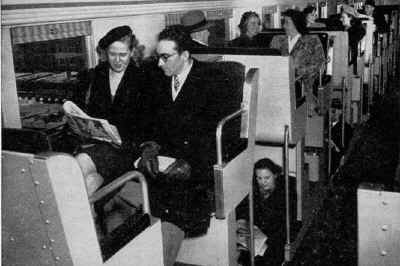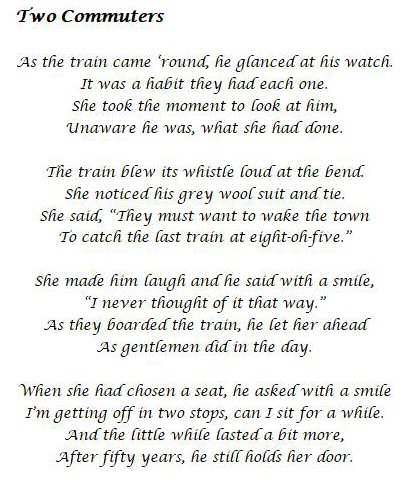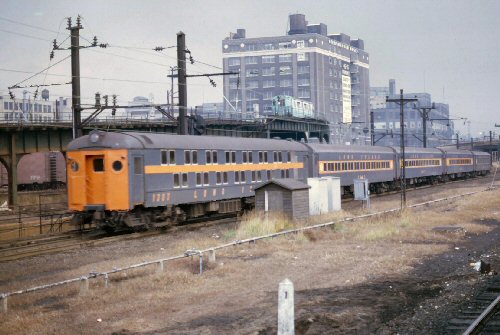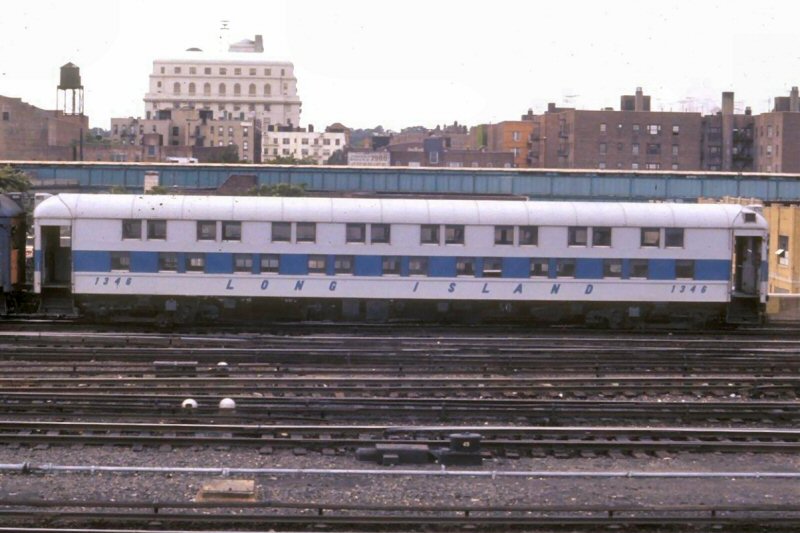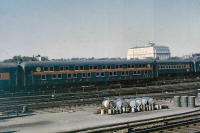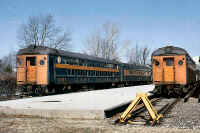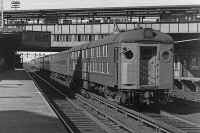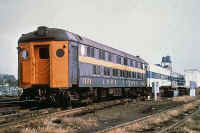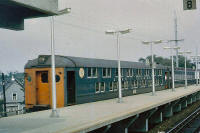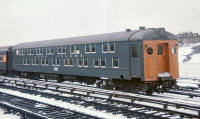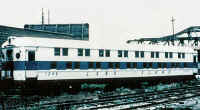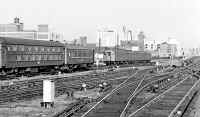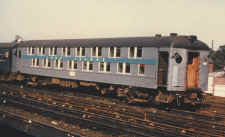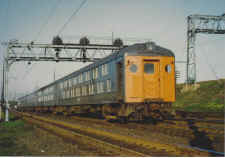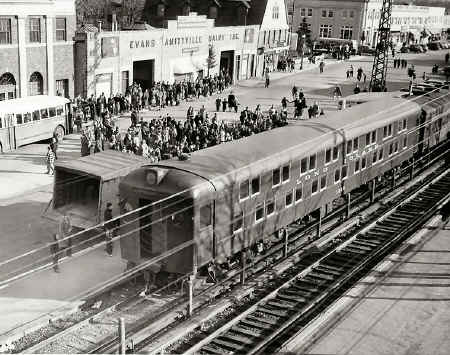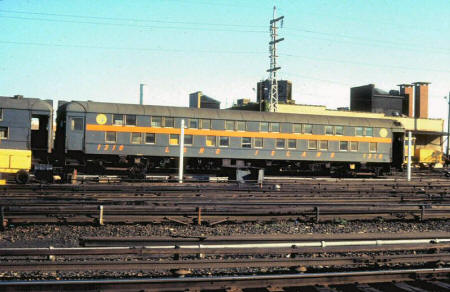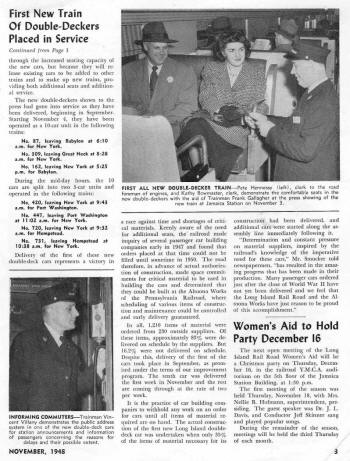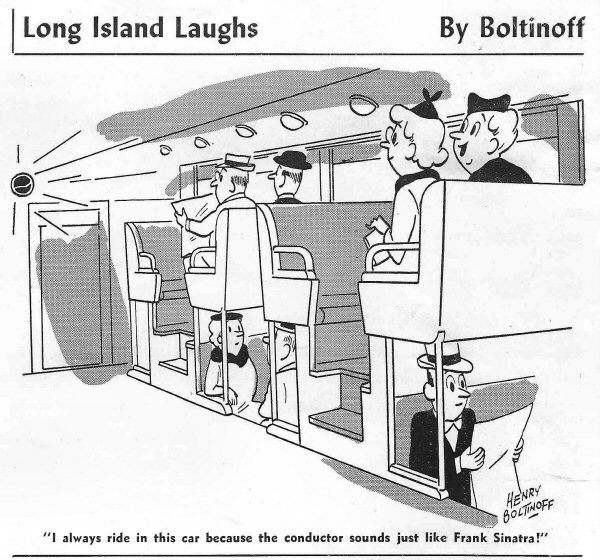|
Long
Island Rail Road Double-Deckers |
|||||||||
|
The roof is free of vents so this double-decker is the post-war 1947-1949 fleet. The paint looks fairly fresh, but has lost much of its original sheen. Also, notice the window frames; they are Tuscan Red; later double-deckers had silver or aluminum-colored window frames.
|
|
||||||||
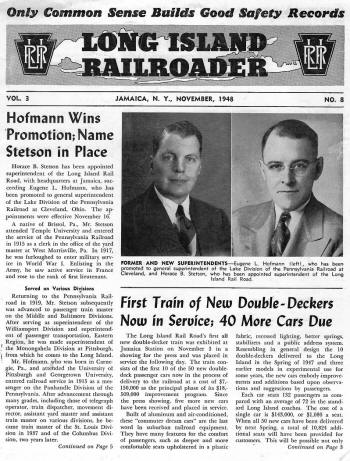 |
|
|
|||||||
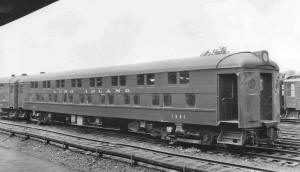 |
MP70A #1341 photo by George E. Votava of the first train of double-deckers on the LIRR laid up in Yard D probably in 1947. Archive: Mike Boland | ||||||||
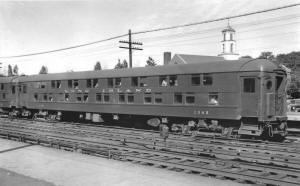 |
MP70A 1346 is at the east end of a train of double-deckers at Floral Park in a photo taken by George E. Votava on September 15, 1948. Archive: Mike Boland | ||||||||
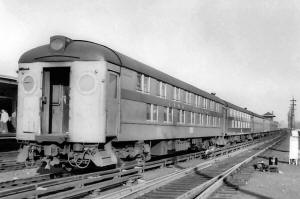 |
A train of double-deckers and Pullman-Standard cars laid up
south of Jamaica station and west of HALL Tower (seen in the background).
The last car is an MP70A and in the Tichy paint scheme and was probably
taken in 1956 or 1957. Notice the equipment trust plate on the double-decker
by the vestibule. Since the storm door is open, this is probably a shot
taken in summer. Archive: Mike Boland |
||||||||
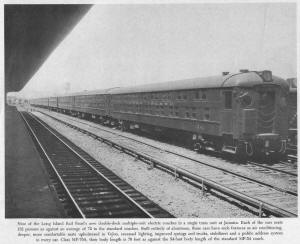 |
Newly arrived MP70A train led by #1341 at Jamaica-Station 1947 Photo: LIRR Archive: Mike Boland | ||||||||
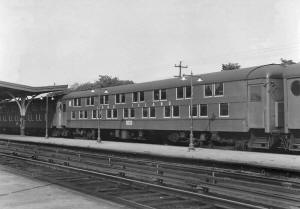 |
This is a shot of MP70AT #1340 and train at Long Beach station on September 27, 1964. Notice the marker light, porthole engineer's window and whistle holder have been painted over in the conversion to a motor trailer. Notice, too, the car's number on the side of the headlight housing. Archive: Dave Keller. | ||||||||
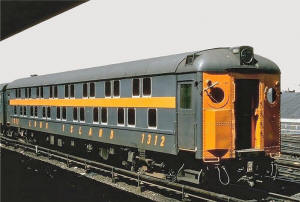 |
MP70B #1312 is one of the "modernized" double-deckers.
Note the brown solarized windows and NO Dashing Dan heralds on the car,
indicating this was a late "modernized" car and repainted in the World's Fair paint scheme AFTER the May 1966 edict that came down abandoning the affixing of Dashing Dan heralds on LIRR passenger cars. Some cars that were not rebuilt or modernized also got the World's Fair paint scheme. Info: Mike Boland
LIRR #1312 2/29/1972 Photo/Archive: Steven Waldman |
||||||||
|
Road No. |
Class | Type |
Length |
Air-cond. |
Built |
Notes |
|||
|
200 |
T62 |
trailer |
72’ 0” |
no |
1932 |
1, 8 |
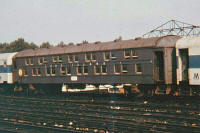 #200 at Jamaica 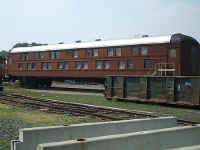 #200 Riverhead 08/26/2007 |
||
|
201 |
T70 |
trailer |
80’ 8-34” |
no |
1937 |
2 |
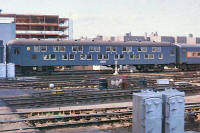 #201 at Jamaica |
||
|
202-205 |
T70A |
trailer |
80’ 8-34” |
yes |
1947 |
3, 6 |
|||
|
1287-1322 |
MP70B |
trailer |
80’ 8-34” |
yes |
1948 |
4, 5 |
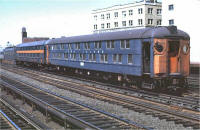 Union Hall Street 7/12/1971 #1296 |
||
|
1323-1336 |
MP70B |
trailer |
80’ 8-34” |
yes |
1949 |
5 |
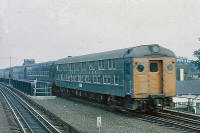
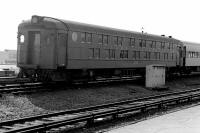 #1326 at Babylon - #1328 c.1970 Photo/Archive: Richard Glueck |
||
|
1341-1346 |
MP70A |
trailer |
80’ 8-34” |
yes |
1947 |
6 |
_5-23-1947_JeffErlitz_small.jpg) LIRR #1343 built PRR-Juniata, 4/1947 Photo: 5/23/1947 Archive: Jeff Erlitz 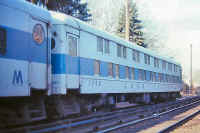 #1346 at West Hempstead |
||
|
1347 |
MP70 |
trailer |
80’ 8-34” |
no |
1937 |
7 |
 #1347 and #201 fairly new c.1937 Photo: Rod Dirkes Archive: Mike Boland |
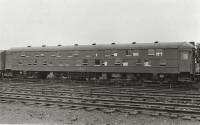 #1347 Morris Park Yard 7/09/1950 Photo: George Votava Archive: Mike Boland |
|
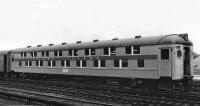 #1347 5/04/1954 Jamaica Archive: Dave Keller |
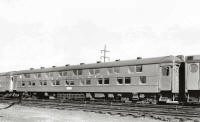 #1347 c.1960 Archive: Mike Boland |
||||||||
|
Notes to table:* 1. Mid-train trailer; no motors or controls. Only surviving LIRR double-decker; preserved at Railroad Museum of Long Island. 2. Controls removed 1958. 3. Delivered without motors due to Westinghouse strike; motors added 1947-48; renumbered 1337-1340; re-classed MP70A. 4. Seven cars (1287-1289, 1291, 1334-1336) converted to motorized trailers in late 1950's, re-classed MP70BT. 5. Ten cars (1301-1307, 1309, 1311, 1312) rebuilt in 1967 with sealed windows and improved air-conditioning. 6. Five cars (1337, 1338, 1340, 1341, 1345) converted to motors in 1958; re-classed MP70AT. 7. Controls and motors removed 1958, re-classed T70. 8. The first double decker car built, lacking both motors and controls, but was also the FIRST ALL ALUMINUM railroad car produced. A major historical milestone. (Dave Keller) *Classic Trains Information |
|||||||||
